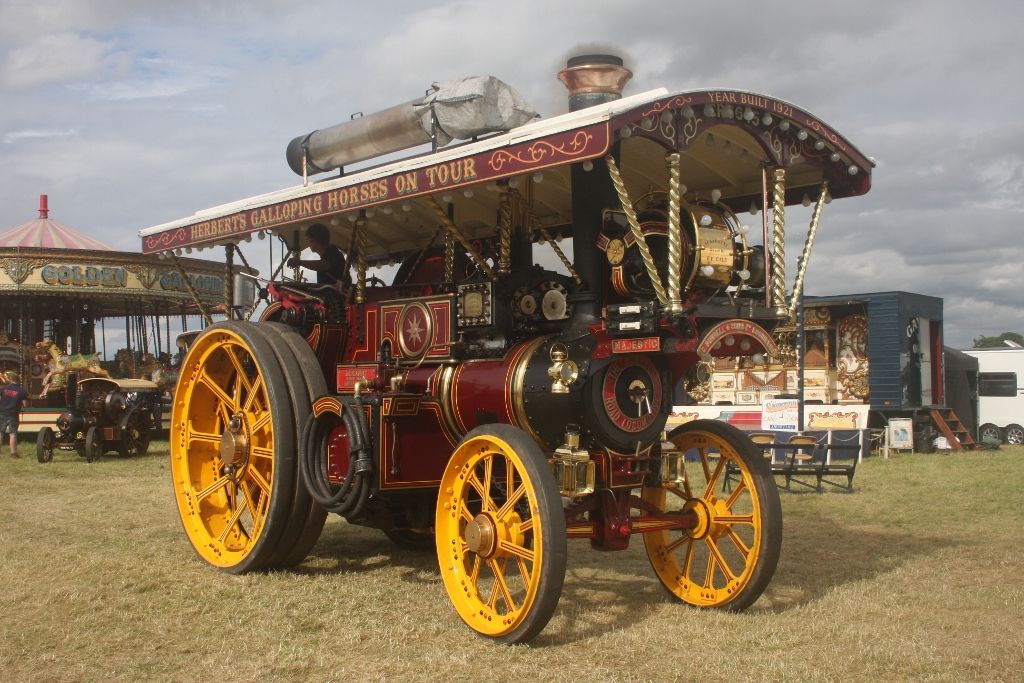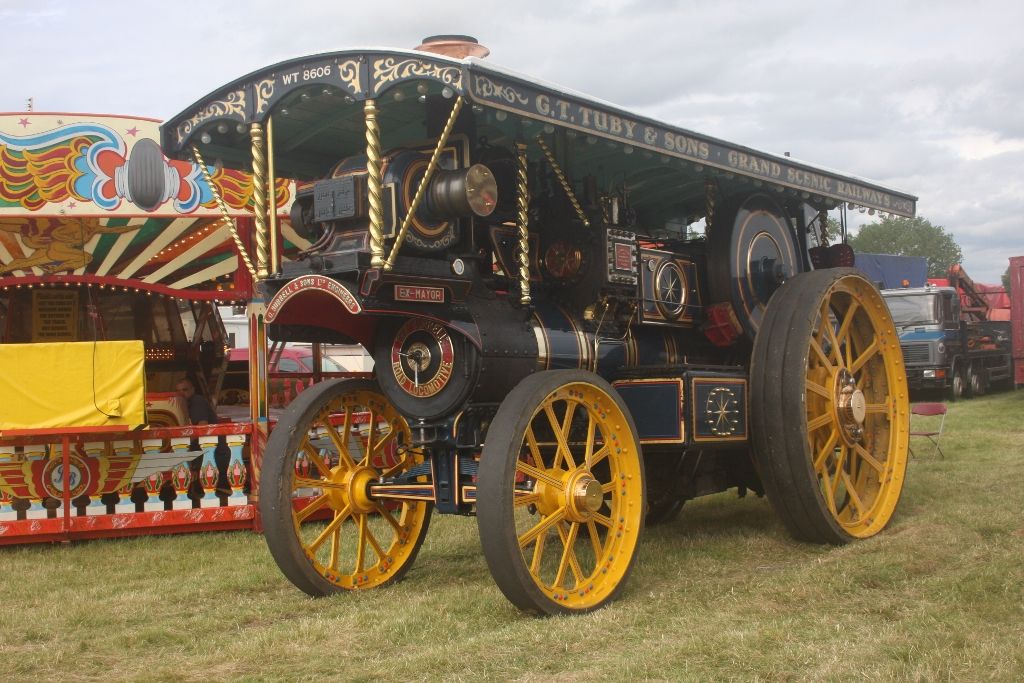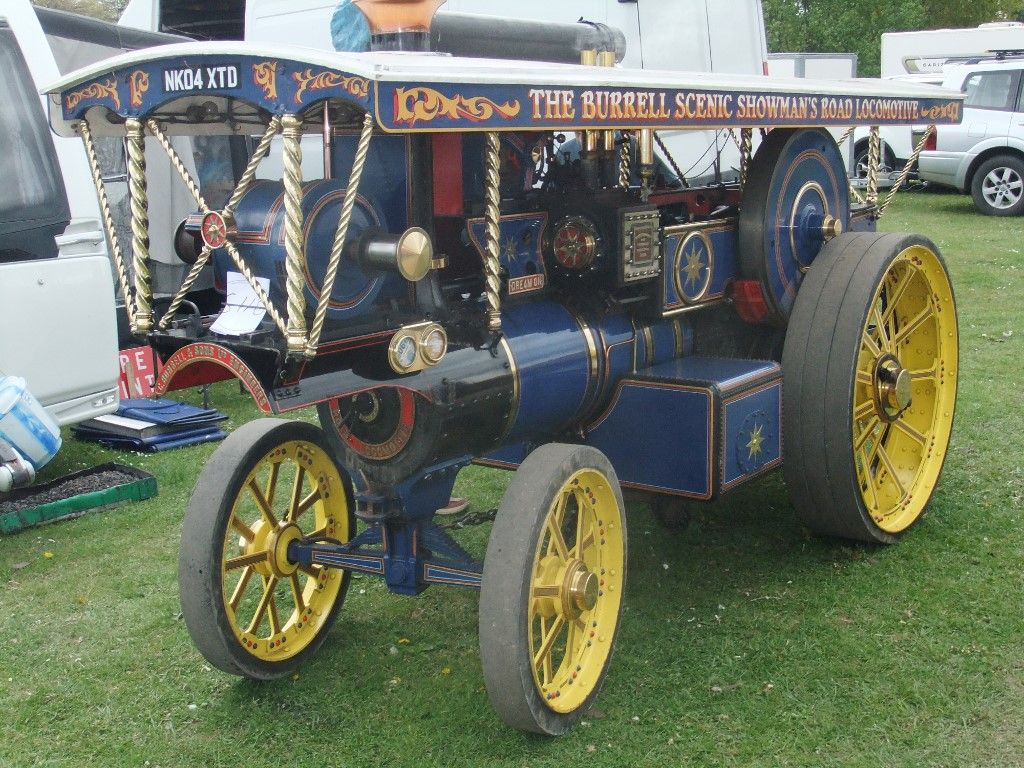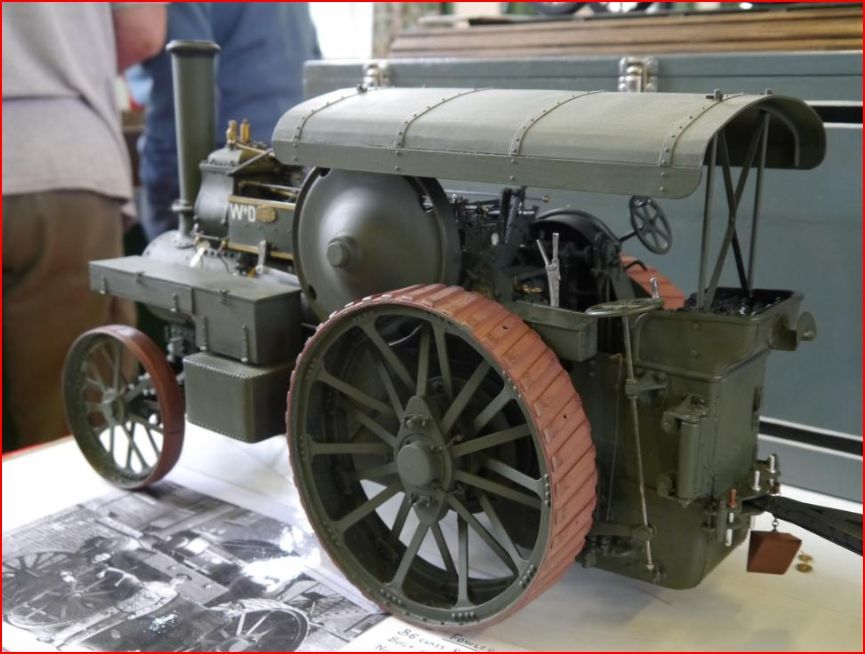These vehicles' commercial days were largely over before colour photography had become commonplace, so most surviving pictures are monochrome; making accurate representation difficult.
What some show is that although twisted olivers and other fancy bits were more or less standard, some engines did not have much signwriting, and occasionally none, along the eaves at all.
.
I ask this though…
… What would be the reaction to someone proudly presenting a full-size or miniature showman's road-locomotive, all proper colours, brass all agleam, owner's name emblazoned along the eaves; but with no canopy lamps. Heresy? Inquisitorial questions like, "When did you last see your bulbs?" No! Realism!
It was rarely or never done in working days, in fact most owners seemed not even to illuminate the controls and gauges electrically: expecting their enginemen to work at night by the dim light of a hurricane-lantern.
There were two reasons. Firstly a large ride, especially a heavy scenic one, needed as many Watts as the engine and dynamo could give it. Secondly it was the ride that earned the money, not the engine. Though a vital part of the set, the engine was usually tucked out of the way; just as is the modern, diesel-engined, towing / power-pack tractor. Not in front because the ride needs clear public visibility and access. So no clarted with watts-wasting, pretty lights.
The Showman's Road Locomotive was intended to be a very impressive tractor out on the road, but merely a mobile generator on the show-ground.
.
I think when we try to replicate in miniature, or preserve in full-size, sometimes we might step back a little from GDSF romance and think what these machines were for, how they were used, and of the conditions their crews endured. Rightly we present them finished in sales, even trade-exhibition, standard; and even more rightly look after them far better than some of the original owners did; but it is rather sobering to read some of the autobiographies by former road and rail steam-engine men.
Indeed, the photograph that sent me in pursuit of my own far-too-extended Hindley wagon project, and parts of the manufacturer's advertising material, form more a study of Edwardian society, than a technical archive.
Oh, at least E.S. Hindley & Sons were kind enough to fit a small paraffin-lamp to illuminate the gauge-glass. It was probably more effective at that, than their larger headlamp versions were at lighting the road ahead. A canopy over the crew though? An optional extra….. .
 Grindstone Cowboy.
Grindstone Cowboy.








